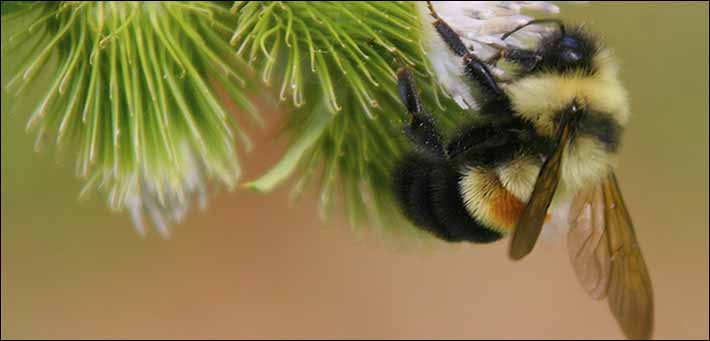
Growing up in Southern Indiana, I was well aware of the bumble bee. To those who have lived in other parts of America, you may never have experienced the black and yellow creature that would buzz with a menacing low-frequency. As a child, I was always filled with wonder and curiosity, but my love for Earth’s creatures was intensified in grade school. I learned our planet was filled with living treasures and my desire to learn more became fueled throughout adulthood.
It always irritated me when an article or television source confused a bumble bee with a honeybee. A honeybee is more slender. A bumble bee is more robust with black hairs separated by beautiful, blocky patches of yellow. They are both wondrous but incredibly different. As a child, I would stalk the giant insect as it would light upon a bright hibiscus flower. Making sure I was unnoticed I would quickly fold the petals of the flowers and encase the annoyed creature inside a buzzing white prison. I would pluck the flower from its stem and listen carefully to the angry hum of a flying insect that, unlike the honeybee, could sting its antagonizer again and again.
Of course I could never release the insect within arms length. Like most creatures, bumble bees are docile but do attack when provoked. A bumble bee may not easily forgive the embarrassment if it is trapped within a native wildflower. (Especially if it feels humiliated in front of friends.) Therefore, I always chose to throw the flower while immediately running for my life in the opposite direction.
I will miss you, my dear friend, the bumble bee.
———————–
The rusty patched bumblebee is a North American native that was once found in grasslands across the eastern and midwestern United States, with a habitat covering 28 U.S. states and two Canadian provinces, according to the FWS. Since 2000, however, habitat loss due to agriculture has restricted the bee to 13 states and one Canadian province. Overall, abundance of the bees has dropped by 87 percent since the late 1990s.
By Stephanie Pappas, Live Science Contributor. January 11, 2017.
——————–
What can I do to help conserve the rusty patched bumble bee?
Garden: Grow a garden or add a flowering tree or shrub to your yard. Even small areas or containers on patios can provide nectar and pollen for native bees.
Native plants:
Use native plants in your yard such as lupines, asters, bee balm, native prairie plants and spring ephemerals. Don’t forget spring blooming shrubs like ninebark and pussy willow.
Natural landscapes:
Provide natural areas – many bumble bees build nests in undisturbed soil, abandoned rodent burrows or grass clumps. Keep some unmowed, brushy areas and tolerate bumble bee nests if you find them.
Minimize:
Limit the use of pesticides and chemical fertilizer whenever possible or avoid them entirely. Pesticides cause lethal effects to bees and other pollinators.
US Fish and Wildlife Service.
